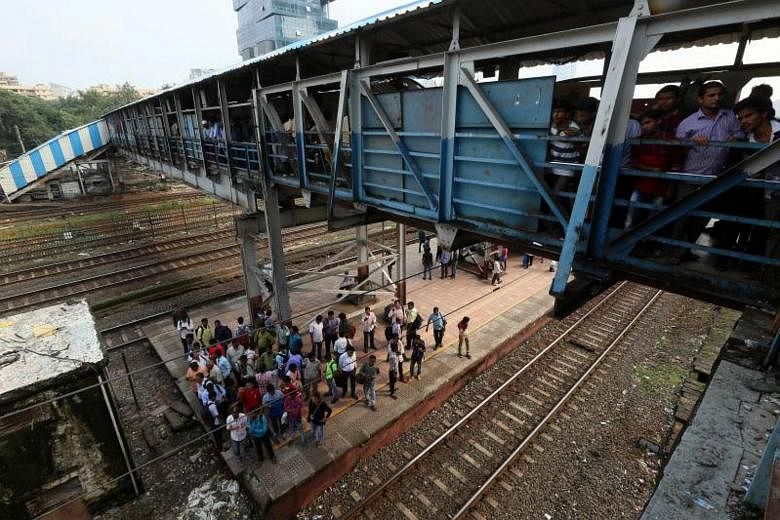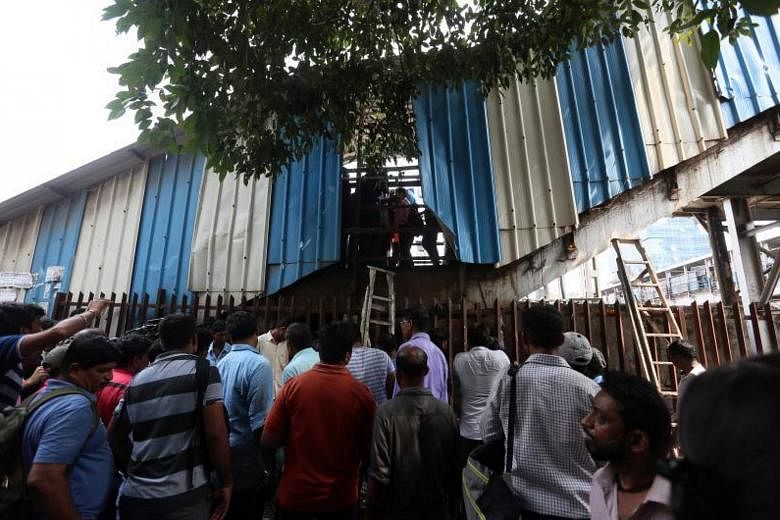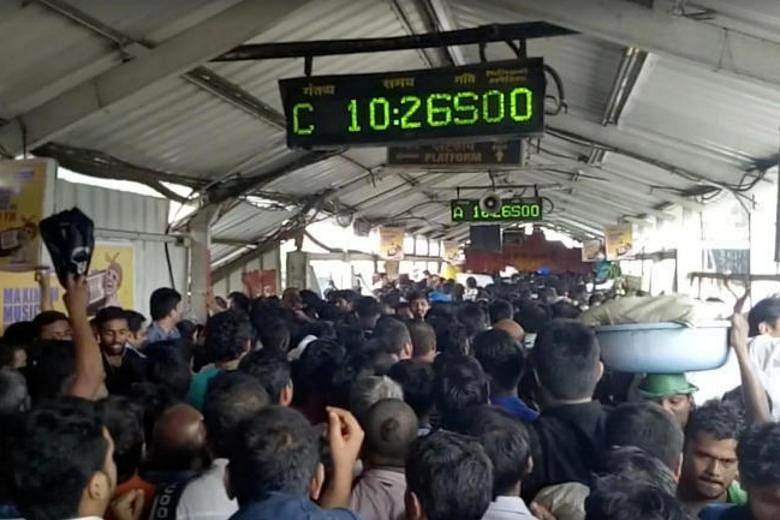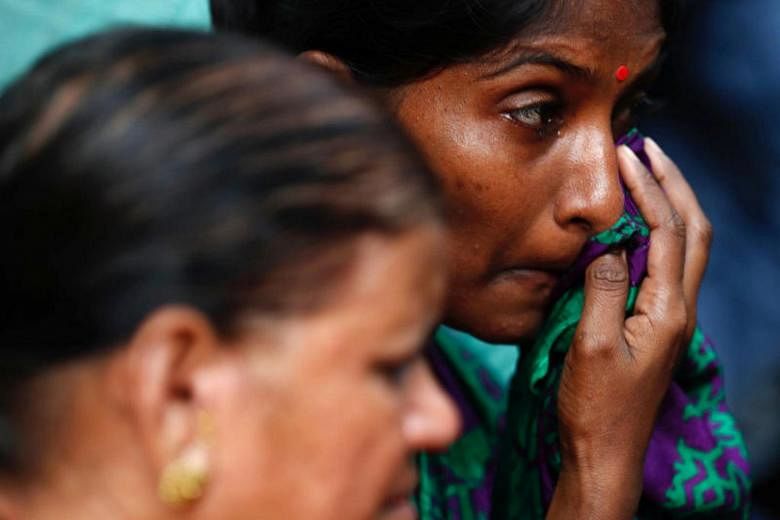MUMBAI, India (Washington Post) - A fatal stampede at a train station in Mumbai left at least 22 people dead on Friday (Sept 29), sparking a debate about India's creaking urban infrastructure.
Eyewitnesses described people being trampled under a panicked crowd on a pedestrian bridge at Elphinstone station, in a recently developed, upscale office area in south Mumbai. Some lost shoes and handbags, others emerged from the scrum with torn clothing, and many lay on the floor screaming for help. More than 30 people were reported injured.
Railways spokesman Anil Saxena said the stampede occurred when a strong rainstorm struck without warning.
"A big crowd had gathered on the footbridge," he said. "They were waiting for the rain to stop. Some people slipped because of the wet stairs, and that's why a stampede-like incident happened."
Mr Shyam Doijade, a 63-year-old retired man who helped injured people into ambulances after the incident, said: "The bridge is not big enough for the public. Some people got stuck, one person's neck here, someone's head there, one foot here, another there. There is a grill near the stairs; people were stuck there, too."
Although stampedes are disturbingly common in India, the incident has sparked an uproar about the risks facing Mumbai's commuters. "Those who go to work on trains here leave their homes wearing a shroud," Mr Doijade said, speaking metaphorically to imply that commuters are prepared for death.
India's trains, especially in major metropolises such as Mumbai, are often crammed with passengers, many hanging outside the cars and pushing one another to get on and off.
According to the National Crime Records Bureau, 29,419 people died in 2015 in railway accidents. Mumbai's trains operate at 2.6 times their capacity, according to data website IndiaSpend.
Residents told The Post said that municipal authorities have not built up infrastructure to keep pace with office blocks and skyscrapers that have mushroomed all over the city in the past decade, often to attract foreign investors and accommodate international companies.
"In terms of industry, the government has not catered," Mr Doijade said. "There are no pavements to walk on. There are potholes in the ground. There is garbage everywhere."
On social media, many Indians called out the government for spending on prestige projects such as a shiny new bullet train from Mumbai to Ahmedabad in Gujarat, the home state of Prime Minister Narendra Modi, instead of focusing on basic infrastructure.
Many of the commuters at the train station on Friday were believed to be employees of international firms with offices in the area. Property salesman Ravindra Kumar Surya, who reached Elphinstone shortly after the stampede, said: "India should be a developed country. Foreign companies are making money from our work, while people here are living the lives of vermin."
Railway Minister Piyush Goyal, who rushed to Elphinstone in support of victims, was greeted by anti-government chants, according to the Hindu newspaper. He said the government has ordered a probe into the cause of the incident.
Mr Modi tweeted: "My deepest condolences to all those who have lost their lives due to the stampede in Mumbai. Prayers with those who are injured."
At the nearby King Edward Memorial Hospital, a small group of people started lining up to give blood to victims. Ms Niharika Sharma, a 17-year-old volunteer at the hospital, described the scene inside as "total chaos".
"There were lots of dead bodies and a lot of people injured," she said. "A lot of people are crying outside the hospital. There are so many people inside that we cannot accommodate them all. People are running here and there. There are no beds; people are just treating patients on chairs."
At Elphinstone station, Ms Dhanashree Dagare, 38, said she began crying when she saw the chaos. "This could have been stopped. Nothing happened, and yet so many people died," she said, implying that nothing in particular triggered the stampede.
"If people had just waited a bit, if the station master had the presence of mind to stop the trains... We saw living people die."





